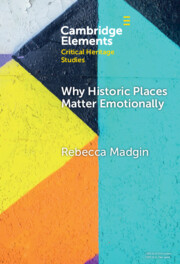Refine search
Actions for selected content:
365 results
Chapter 3 - World Literature as a Planned Economy
-
- Book:
- Five Economies of World Literature
- Published online:
- 09 December 2025
- Print publication:
- 29 January 2026, pp 79-106
-
- Chapter
- Export citation
Severity of migraine-like symptoms and its impact on executive functions in university students: a mediation model analysis
-
- Journal:
- Primary Health Care Research & Development / Volume 26 / 2025
- Published online by Cambridge University Press:
- 02 December 2025, e99
-
- Article
-
- You have access
- Open access
- HTML
- Export citation
The Belgian ‘Impossible Scenario’ of 1980: Reinventing planning in times of ‘crisis’
-
- Journal:
- Science in Context , First View
- Published online by Cambridge University Press:
- 10 November 2025, pp. 1-24
-
- Article
-
- You have access
- Open access
- HTML
- Export citation
An Unlimited Supply of Labor? Counting Workers and Planning Development in Mid-Twentieth-Century Egypt (1939–1960)
-
- Journal:
- International Labor and Working-Class History , First View
- Published online by Cambridge University Press:
- 03 November 2025, pp. 1-17
-
- Article
-
- You have access
- Open access
- HTML
- Export citation
Chapter 5 - Conversation Content and Memory
-
- Book:
- Conversation Memory
- Published online:
- 09 October 2025
- Print publication:
- 23 October 2025, pp 59-78
-
- Chapter
- Export citation

Why Historic Places Matter Emotionally
- Responses - Attachments - Communities
-
- Published online:
- 22 October 2025
- Print publication:
- 13 November 2025
-
- Element
-
- You have access
- Open access
- HTML
- Export citation
2 - Mobilization
- from Part I - Promising Environments: Material Premises of Growth and Power
-
- Book:
- Burning Swamps
- Published online:
- 06 September 2025
- Print publication:
- 25 September 2025, pp 60-94
-
- Chapter
- Export citation
Chapter 9 - Understanding classroom management
- from Part III - Professional practice
-
-
- Book:
- Learning to Teach in a New Era
- Published online:
- 04 October 2025
- Print publication:
- 25 September 2025, pp 303-337
-
- Chapter
- Export citation
Chapter 6 - Planning for teaching
- from Part III - Professional practice
-
-
- Book:
- Learning to Teach in a New Era
- Published online:
- 04 October 2025
- Print publication:
- 25 September 2025, pp 192-228
-
- Chapter
- Export citation
La gestion socioterritoriale du vieillissement : Une analyse perceptuelle dans quatre localités en Acadie du Nouveau-Brunswick
-
- Journal:
- Canadian Journal on Aging / La Revue canadienne du vieillissement , First View
- Published online by Cambridge University Press:
- 23 September 2025, pp. 1-12
-
- Article
-
- You have access
- Open access
- HTML
- Export citation
6 - Reconsidering Disaster Risk Reduction
-
- Book:
- Legacy in the Landscape
- Published online:
- 11 November 2025
- Print publication:
- 11 September 2025, pp 158-170
-
- Chapter
- Export citation
22 - Negotiating
- from Part 4 - Achieves Outcomes
-
-
- Book:
- Leading and Managing Health Services
- Published online:
- 15 August 2025
- Print publication:
- 28 August 2025, pp 248-256
-
- Chapter
- Export citation
32 - Health service planning
- from Part 6 - Shapes Systems
-
-
- Book:
- Leading and Managing Health Services
- Published online:
- 15 August 2025
- Print publication:
- 28 August 2025, pp 369-385
-
- Chapter
- Export citation
Chapter 10 - Organisation
- from Part 3 - How: Embedding the Arts in education
-
- Book:
- Teaching the Arts
- Published online:
- 28 July 2025
- Print publication:
- 06 August 2025, pp 303-331
-
- Chapter
- Export citation
5 - Managing Geopolitics
-
- Book:
- The Great Disruption
- Published online:
- 05 June 2025
- Print publication:
- 19 June 2025, pp 121-139
-
- Chapter
- Export citation
11 - Assessing, planning for and communicating learning
-
- Book:
- Intentional Practice with Infants and Toddlers
- Published online:
- 17 June 2025
- Print publication:
- 12 June 2025, pp 282-308
-
- Chapter
- Export citation
Chapter 8 - How do I implement effective teaching and learning?
- from Part 2 - Understanding learning and understanding teaching
-
-
- Book:
- Introduction to Education
- Published online:
- 14 June 2025
- Print publication:
- 02 June 2025, pp 181-213
-
- Chapter
- Export citation
Chapter 7 - How do I plan for effective teaching and learning?
- from Part 2 - Understanding learning and understanding teaching
-
-
- Book:
- Introduction to Education
- Published online:
- 14 June 2025
- Print publication:
- 02 June 2025, pp 150-180
-
- Chapter
- Export citation
Chapter 3 - Preserving scratch
- from Part 2 - Mobilising resources for war
-
-
- Book:
- Mobilising the Australian Army
- Published online:
- 23 May 2025
- Print publication:
- 30 May 2025, pp 50-70
-
- Chapter
- Export citation
Chapter 9 - Collective security
- from Part 4 - Alliance and concurrency pressures
-
-
- Book:
- Mobilising the Australian Army
- Published online:
- 23 May 2025
- Print publication:
- 30 May 2025, pp 177-200
-
- Chapter
- Export citation
